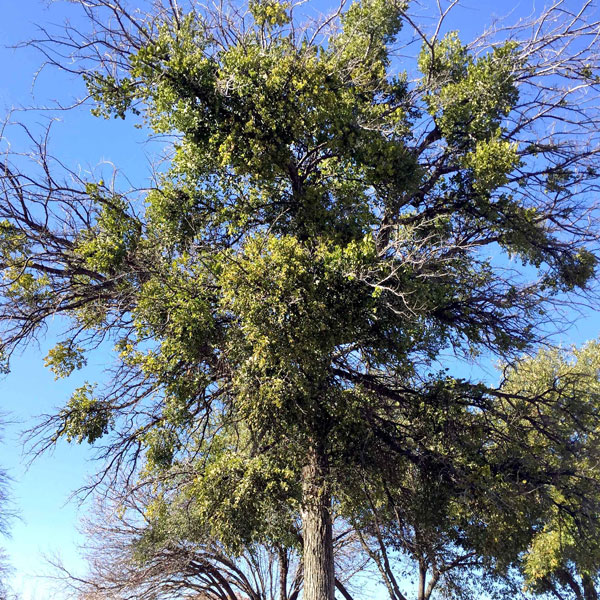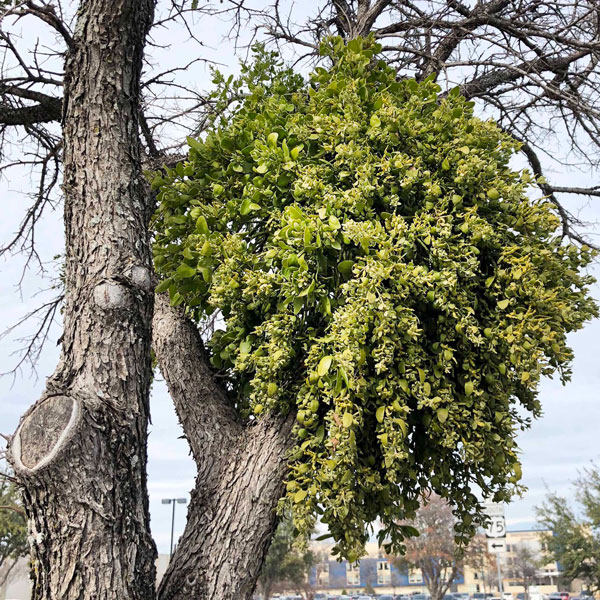What professionals say about mistletoe
Mistletoe is a parasite. That really is all you have to say. You don’t want it growing in your trees’ limbs. It roots into them and causes gnarled growth that can break under pressure or at least cause trees to weaken and even die over time.

But, since it’s rooted into the host tree’s branches, how can you get rid of it once and for all?

Look through these links…
• First, from Texas A&M, here’s a very good recent explanation of mistletoe and the part it plays in the world of plants and animals. It also includes details of how to remove it from important trees.
From the Smithsonian, Five Things You Didn’t Know About Mistletoe. This has some very interesting facts about unusual species of mistletoe. (Were you aware there are 1,700 species of this parasite?)
From the Gardening Know How website, which I don’t cite very often, this write-up is spot on.

For a shorter explanation, the University of Georgia offers this piece from one of its county Extension people.
By then my matches had drifted off to the leafless mistletoes that are found on Colorado conifers (https://extension.colostate.edu/topic-areas/yard-garden/mistletoes-in-colorado-conifers-2-925/). Those are curious novelties for anyone wishing to follow that link.
Those then are the quick facts about an odd group of plants. Its time of use for Christmas has passed. Now it’s time to get it out of your trees.
